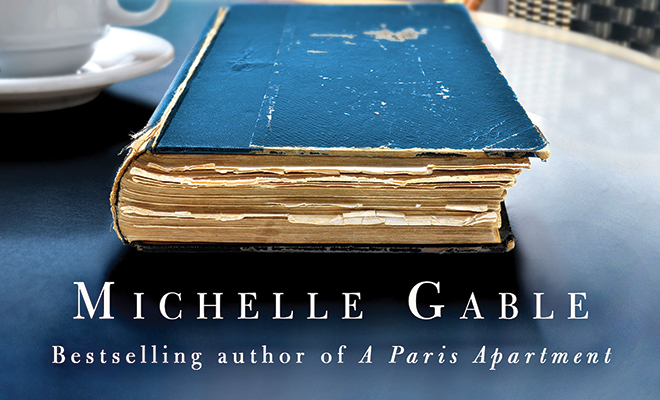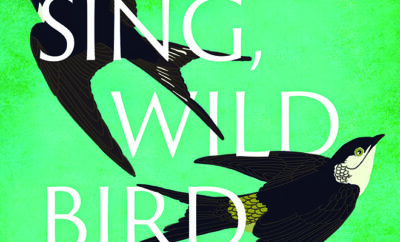
I’ll See You in Paris by Michelle Gable
Michelle Gable follows her first published novel and international best-seller, A Paris Apartment, with another novel of historical fiction. Gable is a graduate of The College of William and Mary with a degree in accounting. She notes on her blog, “It’s still hard to fathom people I don’t know read my books.”
I’ll See You in Paris by Michelle Gable is a romantic novel based on the life story of Gladys Spencer-Churchill, neé Deacon, the Duchess of Marlborough. Mrs. Spencer, as she preferred to be addressed in later years, was the Paris-born daughter of wealthy Americans from Newport. She fell in love with Charles Spencer-Churchill, the ninth Duke Marlborough, when she was 14. Years later, she visited Blenheim Palace in the late 1890s while the Duke was still married to his first wife, Consuelo Vanderbilt. Though the couple did not divorce until 1921, the dalliance of the Duke with Deacon provided considerable respite for Vanderbilt, as hers was a loveless marriage typical of many of the Gilded Age. It was a contract between the powerful, wealthy Vanderbilts and the titled Spencer-Churchills, for which Spencer-Churchill received $2.5 million in American railroad stock.
After the divorce in 1921, Charles Spencer-Churchill and Deacon wed. Mrs. Spencer’s behavior was always eccentric, but it became more and more erratic until the Duke fled Blenheim Palace. The novel is not about her life as Duchess of Marlborough, a title she retained until her death. Instead, it imagines the time period when she disappeared from the society, her eccentricities after the Duke finally evicted her from Blenheim, and the years she spent in the English countryside at a home called The Grange.
The novel’s protagonist, Annie, wants to marry Eric. However, her mother, Laurel Haley, doesn’t approve, as Eric, a Marine in 2001, is about to leave for Afghanistan, and the relationship between mother and daughter becomes tense. As Eric goes to war, Laurel and Annie take a trip to Banbury, England, where Laurel has a land deal to take care of. Laurel is a recently retired lawyer who claims the property is her retirement fund.
The night before the trip, Annie confronts her mother again and asks who her father is. Laurel is evasive; nevertheless, she promises Annie lots of heart-to-heart talks, about property and marriage or whatever Annie wants, once they reach England. Laurel had been looking at an old blue book and other papers in a cardboard box. She seems distracted and heads upstairs to bed. On a whim, Annie grabs the book and goes upstairs, the book tucked in the back of her sweats.
When they arrive in England, Laurel takes off on her mysterious business deal and Annie is left on her own. She begins to read the book, The Missing Duchess: A Biography by J. Casper Augustus Seton. Annie is fascinated by the book, but after three days by herself, she wanders into the local pub to read. While sitting quietly in her booth, she is approached by a stranger, who claims to be Gus, Earl of Winton. He quizzes Annie on the book, how she got it, and why she is reading it. Annie becomes defensive. She is suspicious of an old geezer who approaches young ladies in a pub at midday. As their relationship develops, Annie explores The Grange, Mrs. Spencer’s residence in the 1970s. Gus challenges her, claiming that she is trespassing, but he doesn’t turn her in. Instead, he quizzes her more about what she has seen and found.
The novel goes back and forth between 2001, its contemporary setting, and late 1972, when Win and Pru, the third woman’s story woven in, and Mrs. Spencer were living together at The Grange while Win was trying to write Mrs. Spencer’s biography. Because of the many lies Annie tells and the confabulation between the other characters, the novel is a little hard to follow at first. In fact, the first hundred or so pages are of little interest to the reader. The author is setting up her back story. Just as it starts to get boring, Gable reverses course and begins telling the story in earnest. The reader finally begins to make connections between the two time periods and the three love stories Gable interweaves.
The intricate plotting, multigenerational characters, and the carefully woven tale of love and mystery make I’ll See You in Paris hard to put down once it takes off. There are stories within stories filled with mystery and romance. While the reader can figure out many of the details, there are surprises until the end.
Gable is a writer whom many appreciate for her style and graceful prose. However, I found that the characters seemed to be unnecessarily complex and secretive. If only they had sat down and talked to each other, many conflicts could have been resolved so much earlier. Nevertheless, despite its flaws, the book is a pleasant mystery and love story on many levels. It’s a novel I’m sure you’ll enjoy once you dig in and pass that 100-page mark. ■
Editor’s Note: Readers who want to learn more about Gladys Spencer may find newyorksocialdiary.com/social-history/2011/gladys-deacon-an-eccentric-duchess of great interest.







